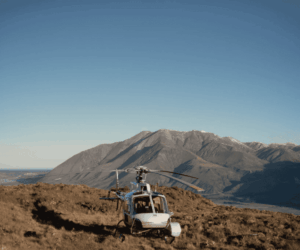Things to Do in Taylors Falls
Andrew.Parks
Tue, 07/16/2024 – 14:53
Taylors Falls — a little town of less than 1,000 residents along the St. Croix River — boasts charming businesses, amazing outdoor recreation, and exceptional places to eat. Find out what to do on your next day trip drive up from Minneapolis-St. Paul below….
What To Read Next
Take a Prince-Themed Tour of Minnesota
Read More
10 Reasons to Bring Ya A** to Minnesota
Read More
A Beginner’s Guide to the Minnesota State Fair
Read More
Get help from the experts to plan your trip
Want to know the best spots in Minnesota? How about tips on how to make the most of your time in a specific city? Our Minnesota experts can answer your questions, offer advice, or plan the perfect Minnesota trip for you. For free.
Things to Do
Article
Caitlin Hannah

A family hikes at Interstate State Park
/ Paul Vincent
OUTDOOR ACTIVITIES
Surrounded by bluffs and high cliffs, the Taylors Falls area is a hiker’s dream. There’s evidence of ancient lava flows and traces of old riverbeds. This bodes well for exploring rocks, especially at Interstate State Park along the scenic St. Croix River, founded in 1895 by Minnesota and Wisconsin.
A recommended hike is the 1.25-mile River Trail, which is well maintained and provides great access to view the glacial potholes. Some of the holes in the bedrock are massive, and the park contains more glacial potholes in a smaller area than any other location in the world.

Taylors Falls scenic boat tour
/ Lucy Hawthorne
For fun on the water, rent a canoe or kayak and paddle the St. Croix. Taylors Falls Canoe and Kayak Rental is located right in Interstate State Park. No paddling experience required, and they supply the life jackets in all sizes. It’s an easy stretch of the river, and there are plenty of sandy beaches where you can pull over and look for rocks or eat a picnic snack. A bonus: The rental company shuttles you back to your starting point.
There are also scenic boat tours from the park that offer great views of the rocky cliffs along the river. The narrated tour points out rock formations all along the riverbanks and adults and kids alike strain to see the “Old Man of the Dalles” in the rock walls. Sometimes you can spot rock climbers scaling the cliffs.

Franconia Sculpture Park
At Wild Mountain, a popular ski area in the winter find Alpine slides, go-karts and a water park with several waterslides, a lazy river, and a wading pool for smaller kids.
Nearby, explore the 43-acre Franconia Sculpture Park that welcomes more than 40 resident artists annually and has dozens of sculptures to view. This complimentary park is open 365 days a year and hosts multiple art and music events.

Downtown Taylors Falls
/ Lucy Hawthorne
SHOPPING
To find a few local treasures from the area, hit the charming little shops right in downtown Taylors Falls. If you’re a fan of antiques, stroll through River Alley Shoppes to find vintage and repurposed goods. Makers will love finding new crafts at Taylors Falls Bead Store and shop local artists and artisan goods at With August.

Stop at The Drive In for burgers, root beer and a round of mini-golf
The area’s most iconic place to eat is The Drive-in, which serves burgers, sandwiches, fried foods, ice cream, and frosty mugs of house-made root beer. Order from your car and enjoy your meal in your vehicle or at a picnic table. When you’re finished with your meal, play a round of mini golf at their charming course.
Sip Minnesota-made wines at Wild Mountain Winery. This dog-friendly spot frequently has live music, wood-fired pizzas, cheese boards and a gift shop. For a special night out, dine at Tangled Up in Blue offering fresh fish, seafood, hand-cut beef, decadent desserts and more. Check their weekly specials for seasonal dishes and local ingredients. Reservations are highly recommended.

Wildwood RV Park and Campground
ACCOMODATIONS
Many campers flock to the area to stay in Interstate State Park or Wildwood RV Park and Campground. Hotels, motels, bed and breakfasts or vacation rentals are available in nearby Chisago City, Forest Lake and Stillwater.
Find more ways to get outside or explore other small towns in Minnesota.
Minneapolis-St. Paul Area
all-other

A couple overlooks the St. Croix River from a rock cliff in Interstate State Park
/ Paul Vincent








